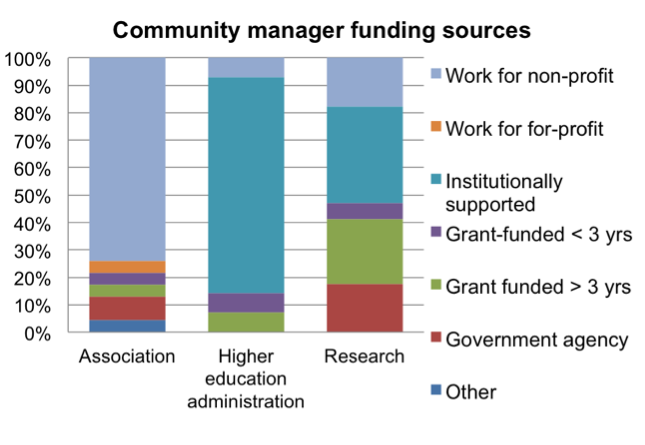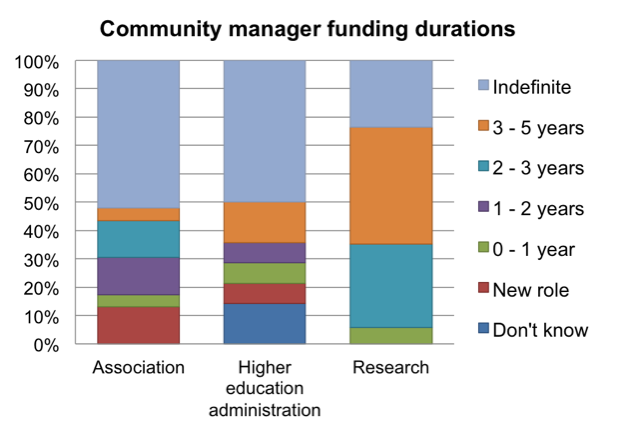Through the State of Scientific Community Management survey we’ve collected data on all facets of the field. So far we’ve looked at scientific community managers’ education and training and identified which types of organizations are hiring them. We’ve also learned that insufficient funding is the number one reason why organizations lack community managers.
Today, we’re following up on this finding by digging a little deeper into the picture of funding for community managers. Read on for 3 key findings.
Finding #1: Scientific community managers are primarily in paid positions
We were pleased to see that 86% (54 of 63) of the scientific community managers who replied to our survey are in paid rather than volunteer positions. This finding held true regardless of the type of organization our respondents worked for. We’re still looking into the data about how much time is devoted to community management in these positions, and what other responsibilities these individuals have.
The large percentage of scientific community managers in paid positions is an encouraging sign that the role is receiving recognition (at least among our respondents). The Community Engagement Fellows Program hopes to help the field become even more established and to provide training resources for its practitioners.
Finding #2: Funding source depends on the type of organization
Our results show that scientific associations and higher education institutions tend to fund their community managers internally, through non-profit and institutional resources respectively. Research-conducting organizations rely on both internal and external funding sources. Community managers in these organizations were funded variously by government organizations, grants, and institutional support (Figure 1).

A case for professional community management is being made in research grant proposals and associations’ staffing decisions, and the Fellows Program could help bolster the justifications for the role.
Finding #3: Long-term community management positions are more likely in associations and higher education administration
Most of the community managers who are funded indefinitely (the longest term) are found in associations or are in administrative roles in higher education (Figure 2). Associations and higher education institutions also have roles funded on shorter terms and roles that are brand new. We’re interested to know how these organizations will assess the effectiveness of these positions and what their strategic objectives might be.

Community managers in research settings tend to have 3-5 year and 2-3 year funding timescales. These are common durations of research grants themselves. When these grants end, the administrative or support positions responsible for community management also end. None of the community managers in research labeled their roles as new, which supports the notion that the 2-3 or 3-5 year role was proposed in the grant from the start.